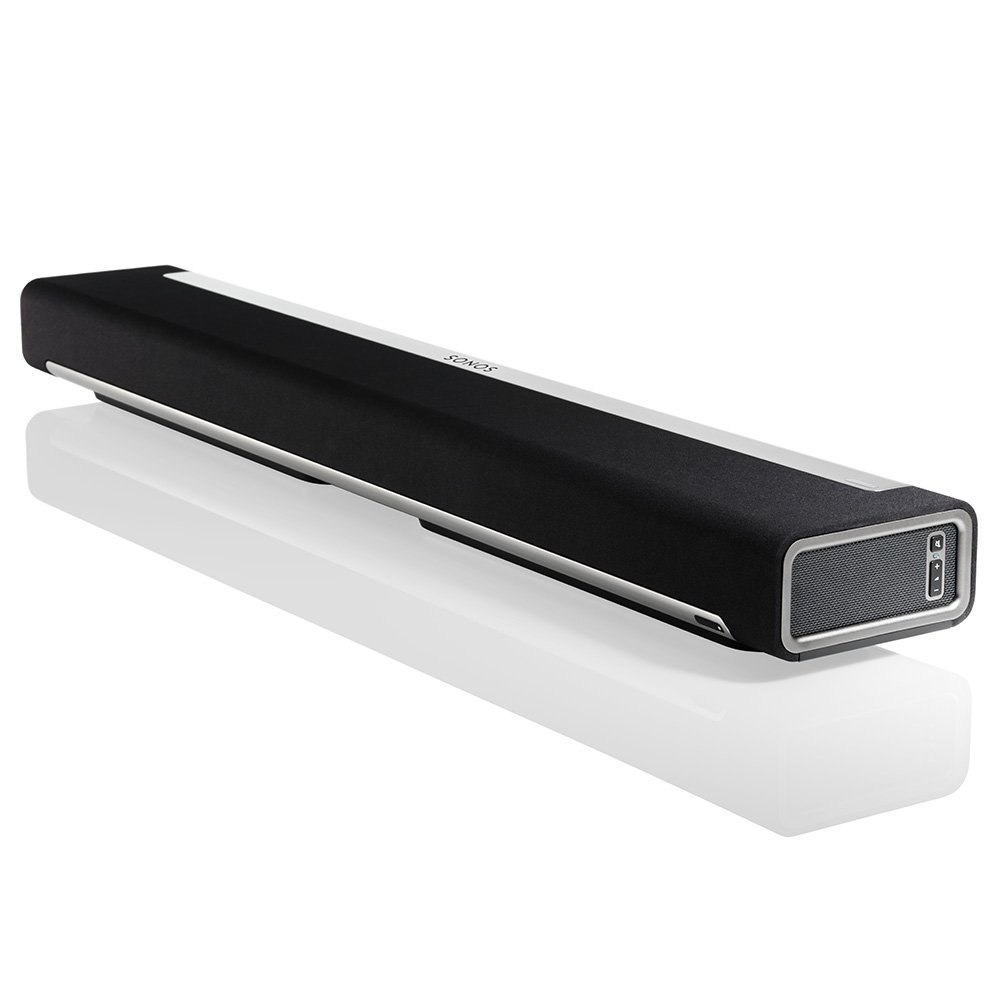Tom's Guide Verdict
The Sono Playbar soundbar fills your room with rich sound, whether from movies or music--if you're willing to pay a premium for the experience.
Pros
- +
Full sound without a subwoofer
- +
Excellent for music
- +
Support for most streaming music services
Cons
- -
Expensive
- -
No Bluetooth connectivity
Why you can trust Tom's Guide
Soundbars were born in part from frustration caused by the lackluster sound that HDTVs produced. That's why most soundbars focus on improving how you hear dialogue but care little about music playback. Sonos, a pioneer in multiroom music systems, is playing to its strengths with the $699 Playbar—the company created a soundbar that excels at music as well as dialogue and sound effects, and can stream from a variety of online sources. But is it worth hundreds more than less versatile soundbars?
Design
Sonos applied the simple and sophisticated style it uses for its modular speaker system to the Playbar. At 35 inches long, it isn't quite as large as many other soundbars, but that didn't stop Sonos from packing in six midrange drivers and three tweeters; compare this to the $500 JBL Cinema SB400, which includes two midrange drivers and one tweeter.
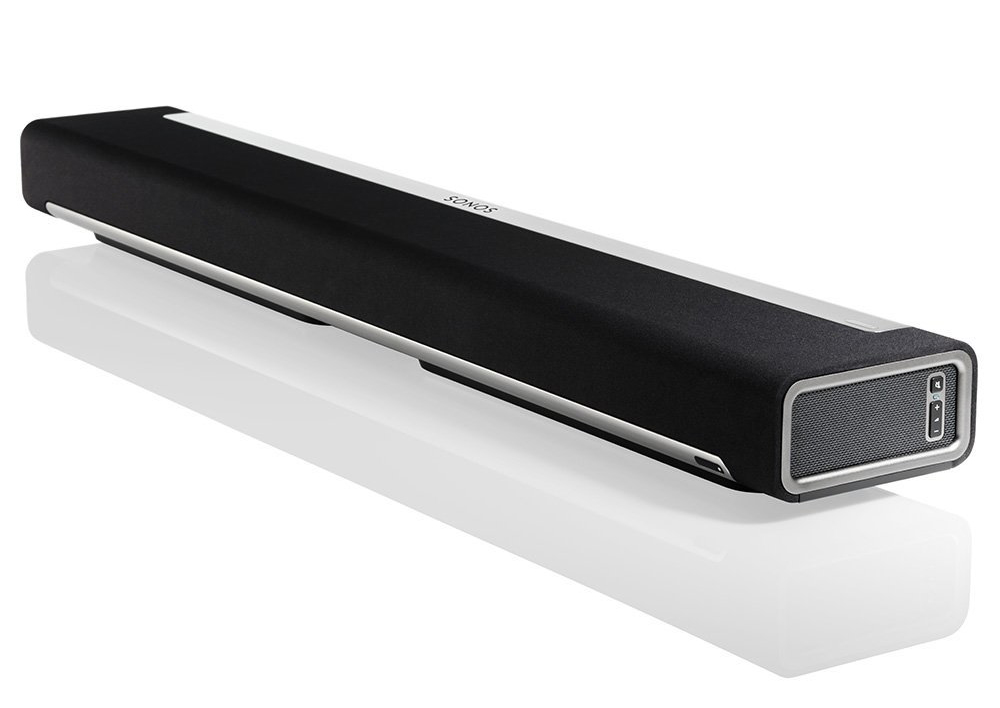
As a result of all those drivers, the unit weighs more than other soundbars at almost 12 pounds, and is deeper at 5.51 inches; the SB400 weighs 7.4 pounds and is only 2.5 inches deep. You can set the Playbar under the HDTV or mount it to the wall above or below the speaker; when you wall-mount the unit, you change the orientation so that the 5.51-inch dimension becomes the height and the 3.35-inch dimension is the depth—which is easier to handle but still sticks out quite a bit.
The Playbar doesn't come with a subwoofer but you can get one separately. That's a real advantage of the Playbar: you can add on to it. Add two Sonos Play:1 speakers and a subwoofer and you have a complete 5.1 home theater speaker set. But the expansion will cost you: Each Play:1 runs $199 while the subwoofer costs as much as the Playbar at $699. By comparison, the Vizio S4251w-B4 soundbar brings 5.1 sound for just $300.
MORE: Best Bluetooth Speakers
Unlike some other soundbars, the Playbar isn't intended to act as a video hub; it has no HDMI inputs. You connect all video sources directly to the HDTV and then use an optical digital audio cable to send the sound from the TV to the Playbar. The Playbar also lacks Bluetooth connectivity, meaning all audio sources need to come through the TV or play from the Sonos app.
Sonos offers only minimal buttons on the right side of the speaker; in addition to a power button, you can adjust the volume. The status indicator light below the power button is the only visual cue that the Playbar provides, as you access all other functions and features through the Sonos mobile app.
Setup and Use
Connecting a Playbar to your HDTV involves a single optical digital audio cable (if your TV doesn't have optical audio output, look elsewhere). You handle the rest of the set up through the free Sonos Controller app for iOS or Android (Mac and PC versions are also available). I used the iOS app for this review.
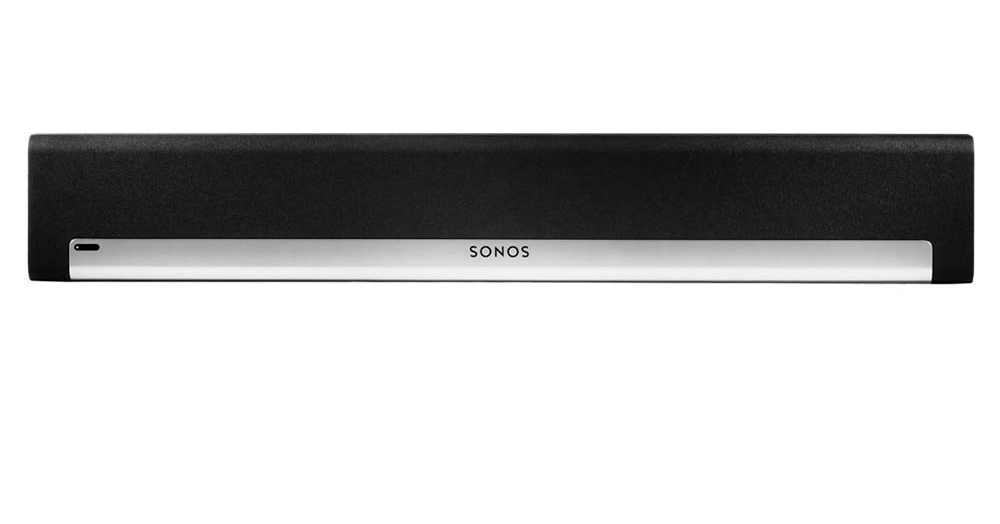
The Playbar needs to be connected to your network for setup; after that, it doesn't need to be connected to the network, but if you aren't connected you limit your control of the sound. The app walks you through each step, and I was able to connect to my Wi-Fi network in a few minutes. You can also use an Ethernet cable to connect the Playbar to a router.
During the setup process, you can program your TV remote to control the volume of the Playbar. When prompted by the app, push the volume button on your TV remote and the Sonos learns the command. It worked on the first try for me with my Panasonic TC-P55ST60.
Sonos App and Services
If you only want to use the Playbar for better sound from your TV, you don’t really need the app once you've completed set up. But if you don't take advantage of the extras that come with a Sonos, your money would be better spent elsewhere. As good as the Playbar sounds, it's the extras that make it worth the premium price.
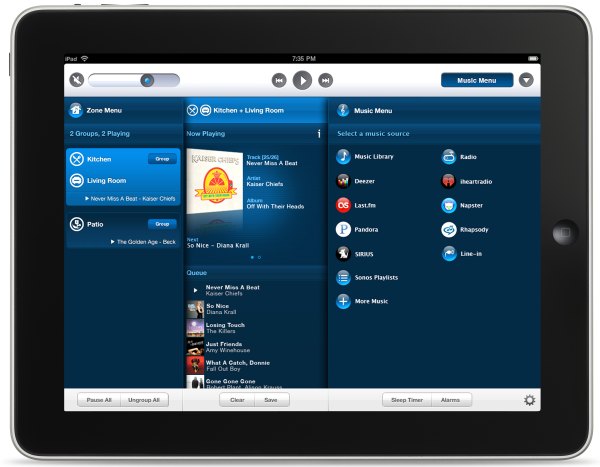
In the app, you can log in to your accounts for music services, including Amazon Cloud Player, Spotify, Google Play Music, Beats Music, Pandora and most other popular subscription and free streaming services. To play music from these services, you must use the Sonos app. You can also play music that is stored on the mobile device you are using, but again you play it through the Sonos app.
MORE: TV Buying Guide
I found the app's interface intuitive; it makes it easy to access your existing playlists and music libraries within each service. The app also has options for boosting bass and treble to tweak the sound, but I didn't find it necessary to adjust either.
Audio Performance
Sonos knows sound, and the Playbar lives up to the brand's reputation.
While watching movies, the Playbar fills the room remarkably well for such a small soundbar. Since it isn't a 5.1 system, it seeks to emulate surround sound—and in the process creates a wide field of sound that makes the viewing experience immersive. In a Blu-ray version of The Hobbit: The Desolation of Smaug, the Playbar deftly reproduced the eerie sound of the spiders lurking in Murkwood forest as they ambush Bilbo and the dwarves—sounds that are part of the surround mix on a 5.1 system.
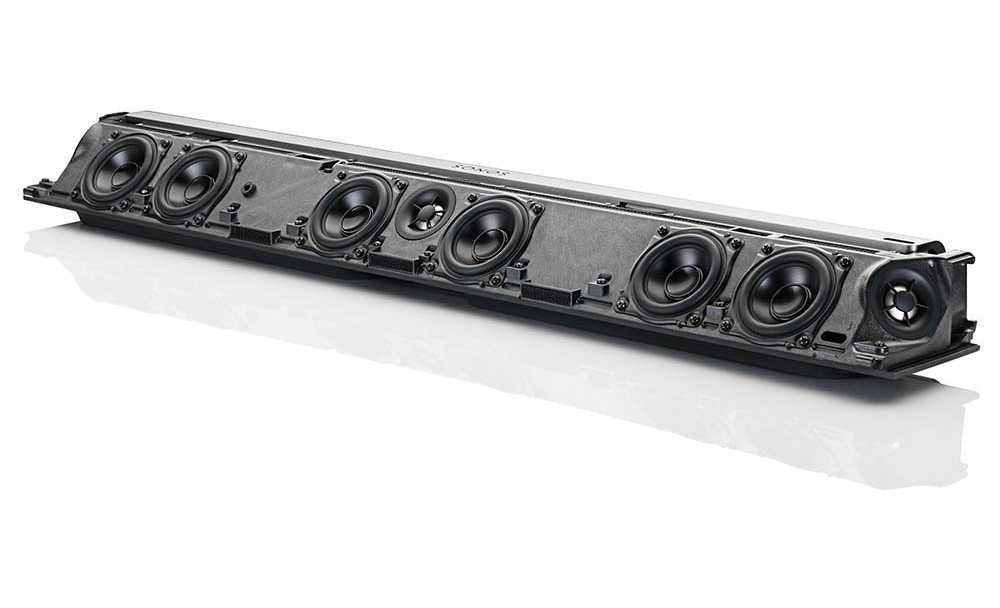
The Playbar includes a speech enhancement setting in the app that boosts the mid-range volume and greatly improves the clarity of dialogue, which I found particularly useful when listening to the narrators in Ken Burns' The Roosevelts: An Intimate History, as well as Frank Underwood's Southern-dialect heavy monologues in House of Cards. Without it on, the voices often got lost in the mix.
In most cases the Playbar alone produced enough bass to give the intent of the low-end effects, though in chase scenes from The Dark Knight I found myself missing the floor shaking that other soundbars with subwoofers can achieve.
Unlike many soundbars, the Playbar cranks tunes just as well as it reproduces movie and television sound. The digital rhythms and noises of Aphex Twins "CIRCLONT6A[141.98]syrobonkusmix" registered crisply, as did Miles Davis' trumpet on Cannonball Adderly's "Autumn Leaves." I didn't miss the sub when listening to music; the distorted bass and thumping kick drum on Jack White's "Lazzaretto" came across forcefully.
Bottom Line
The Playbar lives up to the expectations of a Sonos speaker. It excels at audio for both movies and music. For a system with many content options, it’s very easy to set up and use. However, Sonos locks you into its app for streaming sources because it can't accept a Bluetooth connection.
If you just want full sound and clear dialogue when watching TV and movies, you can do almost as well with systems that cost half as much, such as the Vizio S4251w-B4. But, if you think you'll add more Sonos speakers to other rooms, it's well worth the investment. If music is a priority, you won't find a better-sounding soundbar at this price.

Michael Gowan is a freelance technology journalist covering soundbars, TVs, and wireless speakers of all kinds of shapes and sizes for Tom’s Guide. He has written hundreds of product reviews, focusing on sound quality and value to help shoppers make informed buying decisions. Micheal has written about music and consumer technology for more than 25 years. His work has appeared in publications including CNN, Wired, Men’s Journal, PC World and Macworld. When Michael’s not reviewing speakers, he’s probably listening to one anyway.
-
Integraltech You are correct that this is not a cheap sound bar. There are 2 points I want to respond to: 1. It does not need bluetooth because you can stream music from your phone or tablet directly through the app via wifi. In many ways this is a much better method. Its done within the Sonos app, so it is more simple. It has better range, and in my opinion sounds better. 2. It is not a fair to compare this with a Vizio soundbar or any other budget soundbar. The reason why is because this will last for many years. It will also gain more features via software updates. To date, I have installed about 25 of these and not a single one has failed. I have some Sonos systems that are about 7 years old and they still work fine. You cant say the same about a Vizio sound bar. Sonos does not brag about the quality but they should because they are extremely reliable and long lasting.Reply -
sonos-rocks Agree with previous comment and in addition to that if you use an Android device you can stream directly from the Google Play Music app outside of the Sonos app.Reply -
bmanbaker Agreed with other 2 comments. I have had my Sonos for about 3 years. I have a Play 1, Play 3, Play 5, Sub and Sound-bar. I plan on adding more regularly in time. I really, really enjoy my Sonos. When I purchased my 5th one, my wife asked me "How many of these are you going to buy?". Now, she is totally on board and enjoys them as much as I do. If you really enjoy music and TV, Sonos is the way to go. Additionally, I love to worship with this system too. God Bless!Reply -
BradMcD Sonos is awesome! Up to 7 zones in my home and it's an amazing set of products. We listen to so much music at home now. The Playbar is awesome because when you turn the TV or movie off, switching it right over to your favorite music is a great way to chill. Adding the SUB to any Sonos speaker is a game changer, and stereo pairing any 2 Sonos speakers is fantastic. Keep it coming, Sonos!Reply -
LLaetsch I have the playbar and two play 1's. Why am I only hearing the music from the play 1's and not the actual dialogue?Reply -
americanaudiophile The dialogue should only come from the center channel built into the Playbar. That is the function of a center channel for movies. If you have any issues contact Sonos tech support. They really know their stuff.Reply -
mgs1 Though bass is excellent from their external sub woofer, I find it very disappointing that I cannot boost treble beyond the Sonos standard settings. I wish that there were a work-around for going past their software boundaries to compensate for my large room with lots of windows that causes the Sonos system to fall very short of excellent. I would not have purchased it had I know that treble/high frequencies would be very limited. Sonos says that there is nothing planned to modify this deficiency.Reply -
mgs1 Also, since not all TVs transfer Dolby 5.1 to sound bars (Samsung for one does not on some of their high end TVs), Why doesn't Sonos place an APP on the tvs to enable Dolby 5.1 to be sent to their Playbar seamlessly?Reply -
americanaudiophile The Playbar is an excellent product but in a room that is too big for it you may reach its limit in output. It is odd that you want more highs as most big rooms with a lot of windows have too much sound bouncing around but not a lack of highs. This can cause issues but just turning up the highs will not usually make enough of a difference. If you have blinds on the windows try leaving them partially open so that they can act as diffusers rather than reflectors.Reply
I would like to see them do a software upgrade to make it possible to use multiple Playbars and more than one sub in the same room to expand the capabilities.
As to Sonos making apps for TVs I don't think that an app would control the hardware in the TV even if they thought is worthwhile to make a different app for each brand that would have to be rewritten each model year.
